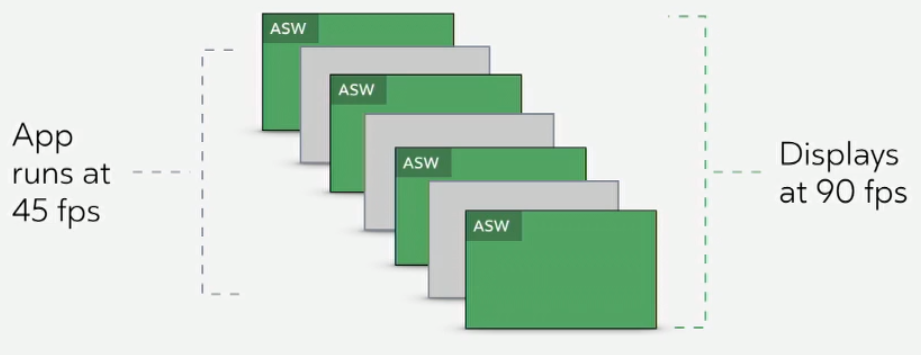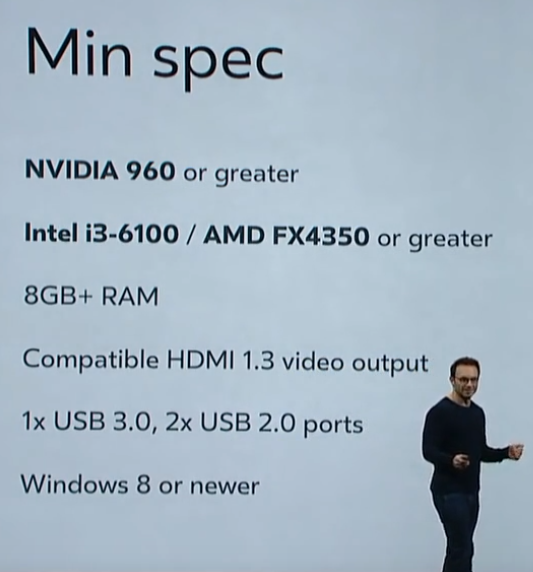Facebook finally released Asynchronous Spacewarp 2.0 for the Oculus Rift and Rift S PC VR headsets. This should result in far fewer visual artifacts when ASW is enabled.
What is ASW?
Low framerate in VR is not just a visual annoyance, but can actually cause discomfort and even sickness. Your graphics card failing to maintain framerate can be incredibly frustrating. ASW was invented to minimize these issues.
The original Asynchronous SpaceWarp (ASW) was released in December 2016. When your GPU isn’t maintaining framerate in VR, ASW kicks in automatically. It forces the running app to render at half the refresh rate of the headset and generates a synthetic frame after each real frame. So when ASW is engaged, half the frames are real and half are synthetic. Whenever performance returns to normal, ASW deactivates and the app returns to normal rendering.

Valve added a similar feature for the HTC Vive in SteamVR in November called “Motion Smoothing”. Windows MR headsets have “Motion Reprojection”. Earlier this month, Pimax added a similar feature called “Smart Smoothing”.
ASW 2.0: Incorporating Depth
ASW 1.0, like the similar technologies from other companies, uses the changes (ie. motion) between previous frames to generate the synthetic frames. The result is preferable to dropped frames. However, since it has no understanding of depth, only color, their extrapolation is imperfect so there can be visual artifacts such as seen in the video above.
The major change of ASW 2.0 is that it now incorporates understanding of depth. This should enhance the quality of the extrapolation and result in much fewer artifacts. It could make it hard to distinguish between ASW and real frames — and that could radically improve the Rift experience on weaker GPUs.
Facebook claims ASW 2.0 also reduces headset latency because timewarp itself is now positional. The company also claims it will work even when the app drops below half framerate.
Unlike all the other techniques so far however, ASW 2.0 won’t work on just any app. The developer has to submit their depth buffer each frame, otherwise it will fall back to ASW 1.0.

Both Unity and Unreal Engine, which together power the vast majority of VR apps, now submit depth by default when using their Oculus integrations.
ASW isn’t available on Oculus Quest, as the mobile hardware isn’t powerful enough to do the extrapolation.
Want more detail on the various reprojection technologies and how they work? Read our guide: VR Timewarp, Spacewarp, Reprojection, And Motion Smoothing Explained.

























